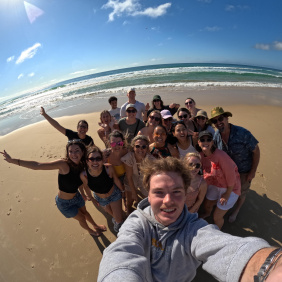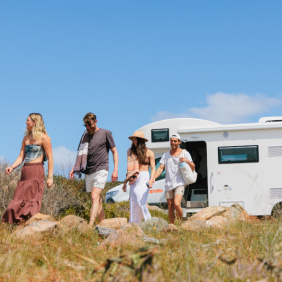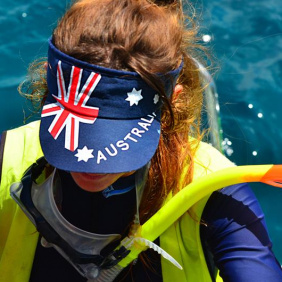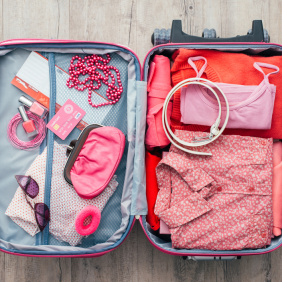Did you know that there are more kangaroos than people living in Australia? (they’re almost double the population) This beautiful country is not only full of stunning landscapes, but also home to such a wide range of wildlife that it’s in the top 10 most biodiverse countries in the world. But it’s not only about the famous marsupials and monotremes. Some of the most bizarre and marvellous wildlife can be encountered in Australia. We’ve compiled a list the best wildlife locations in Australia so you can spot a few Aussie icons. For photographers, a visit to the following ten destinations will provide opportunities to take some unforgettable wildlife pictures.
Taronga Zoo
Image thanks to National Geographic
The wildlife experience offered at Taronga Zoo is unparalleled. With over 4000 animals from over 350 species, many of which are threatened, everyone will find a chance for a unique photo. Along with getting up close and personal with the hand-raised inhabitants of the zoo, especially the echidnas, visitors also get to feed the wildlife and even get behind the scenes with an animal encounter – the easiest way to take some close ups and breathtaking snaps.
Bush Golf Courses
Image thanks to Noosa Golf Club
Regardless of the stereotype, there are indeed plenty of wild kangaroos hopping around Australia. Strangely enough, kangaroos are often spotted at golf courses, which you can find everywhere across the country. This is because Kangaroos get a bigger boost in nutrients from the meticulously managed fairways. According to a local legend, a golfer somehow once managed to hit the ball into a kangaroo's pouch. So why not getting in touch with one of the most famous animals on the continent in an easily accessible spot? Maybe you can even have a round of golf at the same time! But be careful, never get too close and always remember that they are wild animals!
Lone Pine Koala Sanctuary
Image thanks to Vic Advisor
At Lone Pine Koala Sanctuary, the world’s first and largest koala sanctuary with 130 koalas, it’s an easy thing to capture these cute creatures on a close up. Visitors to the sanctuary may even cuddle up with a koala for a cute photo – a memory of a lifetime! You will also come across other wild Australian inhabitants like wombats, dingos and of course, kangaroos.
Magnetic Island
Image thanks to Ray & Sue Travel Photography
Visiting Magnetic Island at daytime means getting a glimpse of sleeping koalas. The famous Forts Walk is full of gum trees, which is where these sleepy fur balls prefer to have their nap time. You will also come across a World War II defence complex that offers scenic views of the island and offers a great opportunity for stunning photos.
Monkey Mia
Image thanks to Shark Bay
You can find wildlife not only on the mainland but also in the oceans surrounding Australia’s coast. The bottlenose dolphins that inhabit the waters around Monkey Mia are very friendly and come to the beach two or three times a day for food. Visitors may not only photograph the dolphins but can also feed them as well. This is an amazing experience and getting the rare chance to get this close to dolphins means you definately shouldn’t miss it!
Ningaloo Reef
Image thanks to Tourism Australia
Besides the Great Barrier Reef, Ningaloo Reef is one of the great reefs in Australia, which whale sharks, one of the biggest fish in the world, make their home during the season between April and July. The reef itself is located on the Australia’s west coast and reaches out over 250 km. Photographers can head there on a cruise from Exmouth and take photographs of not only of the sharks, but they can even spot dolphins, rays and turtles. For this unique experience it is definitely worth it to bring an underwater camera.
Rottnest Island
Image thanks to SeaLink Rottnest Island
Dutch explorers actually thought that the animals this island was full of were rats, which is why the named it Rottnest Island. However, these inhabitants are not rats but the famous quokkas that roam around the island and rummage for snacks. Visitors may get a little close and take pictures of these cute creatures but fines apply for touching them.
Tower Hill State Game Reserve
Image thanks to Parks Victoria
Photographers will find it rather easy to capture emus at Tower Hill since they are not camera shy at all. Rather than that, the emus there are bold and fearless when it comes to approaching visitors. Echidnas can also be spotted in the area near Warrnambool.
National Parks
Image thanks to The Wong Couple
The several national parks plus the multiple marine parks and botanical gardens all across Australia are a must visit for those who want to take amazing shots. One of the most famous spots is Kakadu National Park, which is home to 117 species of reptiles. Another great spot is Uluru-Kata Tjuta National Park, where you will find lots of camels, yes that’s right! You will never find as many breathtaking photos as there. Just allow yourself some time to discover these beautiful nature sights and capture some unique wildlife!
Yellow Water
Image thanks to Kakadu Tourism
Swimming with wildlife at Yellow Water is probably not a good idea, but visitors never leave without capturing some of the enormous saltwater crocodiles that slide in and out of the water. Varied birdlife also frequently fly over the area.
With all these great spots to take amazing pictures you’ll not only to impress everyone back home but also to take away some great memories, bringing your camera to Australia is an absolute must!
About The Author:
Lena is a Tourism Management student from Germany and wants to travel every country in the world before turning 80. For her, travelling is more than just holidays on the beach, it is about exploring the local life and get to know different cultures and traditions.



